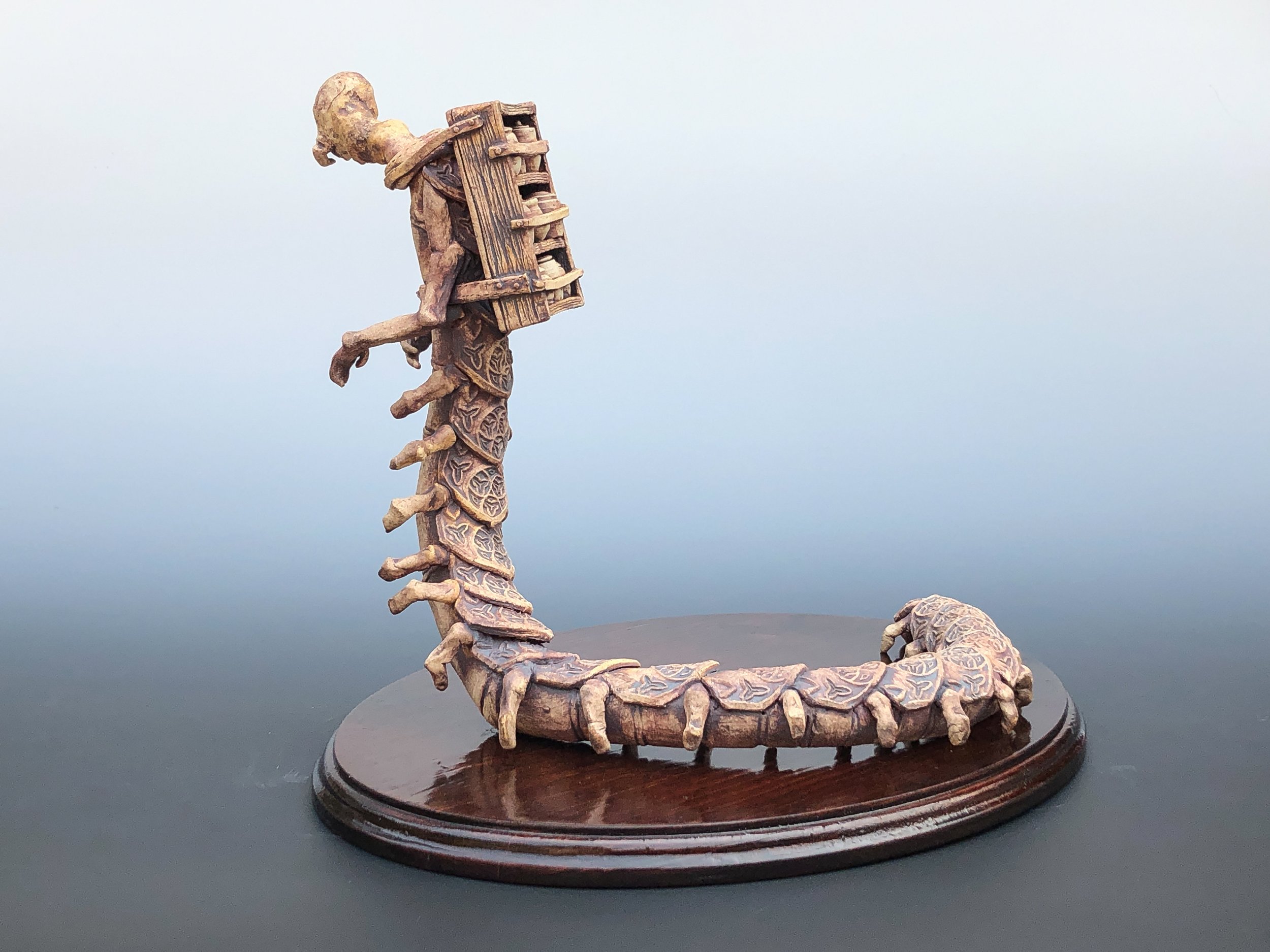Psychopomp
Psychopomp
The Story Behind the Sculpture
I was maybe 12 or 13 when my dad first told me about Charon the Ferryman.
Charon, he’d explained, guarded the River Styx in Greco-Roman mythology, and you had to leave coins on the eyes of the dead so they could pay Charon to take them across the river and into the land of the dead.
I didn’t know at the time that Charon was a kind of being called a psychopomp (think Grim Reaper for a more modern example), but the idea of someone or something guiding the newly deceased to the afterlife has fascinated me to this day.
I brought that fascination in this sculpture, creating my own version of a psychopomp.
The design for my psychopomp draws primarily from the cultural roots and aesthetic vocabulary of the gothic and the macabre.
It’s centipede like body signifies decay, drawing to mind earth and mulch.
It hints that such insects would carry our bodies away if left to nature the way a psychopomp might carry away our souls to the afterlife.
Its scales bear designs drawn from Gothic windows, highlighting the link between Gothic architecture and the medieval culture of death that gave us the macabre art of memento mori (think skulls and relics and the like).
The pack it carries integrates the harnessing of horse-drawn carriages, reinforcing the humble nature of this being and linking the roots of the word psychopomp to the Greek idea that Fate is immutable, and all we can do is carry out its will.
Psychopomp is a humble servant of Fate, protecting and carrying souls in their urns to the afterlife.
In private collection.





